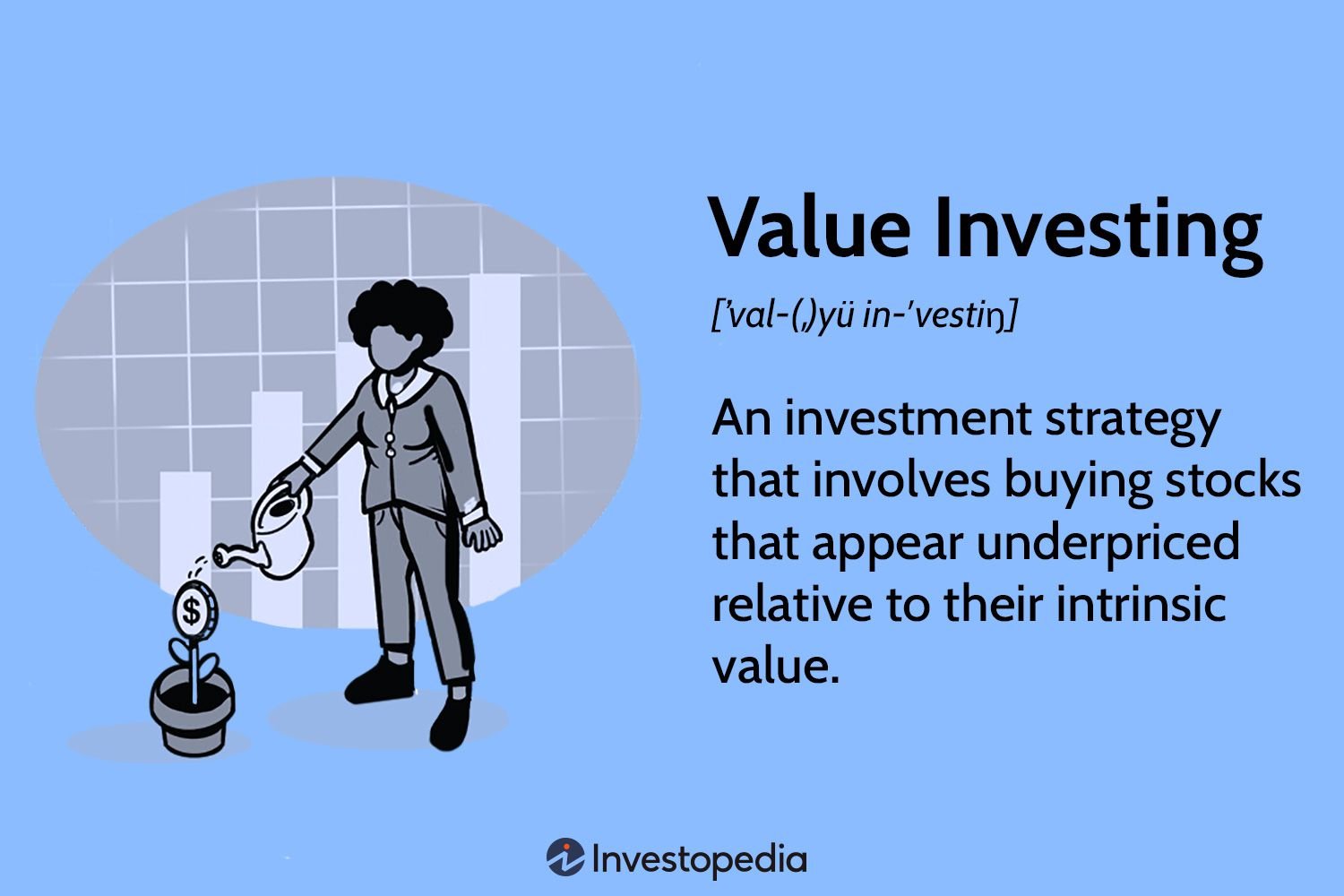Value investing is a proven strategy that has stood the test of time. So, if you’re looking to understand the principles of value investing, you’re in the right place. This approach to investing is all about seeking out stocks that are undervalued by the market, and then capitalizing on their true worth. By focusing on a company’s fundamentals rather than short-term market trends, value investing provides a solid foundation for long-term success. In this article, we’ll dive into the core principles of value investing, empowering you with the knowledge to make informed investment decisions. Let’s get started!
Understanding the Principles of Value Investing
Introduction
Value investing is a popular investment strategy that aims to identify undervalued stocks and opportunities in the market. It involves analyzing financial statements, performing in-depth research, and seeking out companies that are trading below their intrinsic value. By understanding the principles of value investing, investors can make informed decisions and potentially achieve long-term financial success.
In this article, we will explore the essential concepts of value investing, including its definition, key principles, and strategies for implementing this approach. Whether you are a beginner looking to enter the world of investing or a seasoned investor seeking to refine your knowledge, this guide will provide you with valuable insights to help you navigate the stock market intelligently.
What is Value Investing?
Value investing is an investment philosophy that involves buying stocks or assets with the belief that they are undervalued. This approach is based on the principle that the market often misprices assets in the short term and that their true value will eventually be recognized.
The primary objective of value investing is to identify companies whose fundamental value exceeds their market price. By purchasing these stocks at a discount, investors aim to generate returns as the market realizes their true worth. Value investors typically adopt a long-term perspective, focusing on the intrinsic value of the assets rather than short-term market trends.
The Principles of Value Investing
Value investing is rooted in a set of fundamental principles that guide investors in their decision-making process. By adhering to these principles, investors can develop a disciplined approach and improve their chances of success. Let’s delve into the key principles of value investing:
1. Intrinsic Value
Intrinsic value is a fundamental concept in value investing. It refers to the actual worth of an asset, independent of its market price. Value investors believe that markets are often influenced by short-term fluctuations and emotions, leading to mispriced stocks. By estimating the intrinsic value of a company, investors can assess whether the stock is trading at a discount or a premium.
To determine intrinsic value, investors employ various methods such as discounted cash flow (DCF) analysis, comparative valuation, or assessing the company’s tangible assets. By thoroughly analyzing a company’s financials, including its cash flows, earnings, and growth potential, investors can estimate its intrinsic value and make informed investment decisions.
2. Margin of Safety
The margin of safety is a crucial principle in value investing that helps mitigate risk. It refers to the difference between the estimated intrinsic value of a stock and its current market price. Investing with a margin of safety means purchasing an asset at a price significantly lower than its intrinsic value, providing a buffer against potential losses.
By buying stocks with a margin of safety, value investors protect themselves from unforeseen events or unfavorable market conditions. This principle enables them to withstand temporary market fluctuations and potential declines while increasing the potential for long-term gains.
3. Patience and Long-Term Perspective
Patience and a long-term perspective are essential qualities for value investors. Value investing is not a get-rich-quick strategy but rather a methodical approach that rewards those who can hold investments for extended periods. By patiently waiting for the market to recognize the true value of a stock, investors can maximize their returns.
Value investors look beyond short-term market fluctuations and focus on the underlying fundamentals of a company. They understand that the market often overreacts to news or events, creating opportunities to purchase undervalued stocks. By staying disciplined and maintaining a long-term perspective, investors can benefit from the potential growth and value appreciation of their investments.
4. Fundamental Analysis
Fundamental analysis is a cornerstone of value investing. It involves analyzing a company’s financial statements, industry trends, competitive position, and management team to evaluate its intrinsic value and growth potential. By examining a company’s financial health, investors can determine whether it is a sound investment.
Key factors analyzed during fundamental analysis include revenue growth, profitability, cash flow generation, debt levels, and competitive advantages. By understanding a company’s financial metrics and its industry dynamics, investors can identify stocks that are potentially undervalued and have the potential for long-term growth.
5. Contrarian Thinking
Contrarian thinking is another principle embraced by value investors. It involves going against prevailing market sentiment and being willing to invest when others are fearful or selling. Value investors believe that market inefficiencies and irrational behavior can lead to mispriced stocks, presenting buying opportunities.
Contrarian thinking requires the ability to detach from short-term market noise and make independent decisions based on thorough analysis. By having the courage to invest when others are pessimistic, value investors can capitalize on market overreactions and potentially achieve significant returns.
Value Investing Strategies
Implementing value investing strategies requires a systematic approach and adherence to the key principles outlined above. While multiple strategies exist within the realm of value investing, two prominent approaches are worth mentioning:
1. Deep Value Investing
Deep value investors seek out stocks that are significantly undervalued compared to their intrinsic worth. These investors focus on distressed companies or industries facing temporary challenges. By carefully analyzing a company’s financials, restructuring plans, and potential catalysts, deep value investors aim to identify stocks with substantial upside potential.
Deep value investing often involves investing in companies experiencing short-term setbacks, which can create opportunities for substantial gains once the market recognizes the company’s turnaround potential. This strategy requires thorough research and a contrarian mindset, as these stocks are typically overlooked or undervalued by the broader market.
2. Quality Value Investing
Quality value investing focuses on identifying high-quality companies trading at a discount. These companies often possess strong competitive advantages, stable revenues, and consistent profitability. By investing in quality stocks at attractive valuations, investors aim to benefit from the compounding effect of their long-term growth potential.
Key factors considered in quality value investing include the company’s track record, management team, industry position, and financial stability. This strategy requires a focus on qualitative analysis and a deep understanding of the company’s fundamentals. Quality value investors prioritize the long-term prospects of the company over short-term market fluctuations.
Understanding the principles of value investing is essential for investors looking to make informed decisions in the stock market. By appreciating concepts such as intrinsic value, margin of safety, patience, and fundamental analysis, investors can develop a disciplined and successful investment approach.
Value investing is not a one-size-fits-all strategy, and investors should adapt their strategies according to their risk tolerance, time horizon, and investment goals. Whether employing deep value or quality value strategies, the key is to maintain a long-term perspective and make rational investment decisions based on thorough research.
By embracing the principles of value investing, investors can increase their chances of achieving sustainable long-term returns and navigate the stock market with confidence. Remember, investing involves risk, and it is always advisable to consult with a financial advisor before making any investment decisions.
FAQs
Please refer to the FAQ section for answers to commonly asked questions about value investing.
Warren Buffett's Value Investing Formula (For Dummies)
Frequently Asked Questions
Frequently Asked Questions (FAQs)
What is value investing?
Value investing is a strategy that involves selecting stocks that are considered undervalued compared to their intrinsic value. Investors who follow this approach aim to buy stocks at a price lower than their estimated worth, with the expectation that the market will eventually recognize the true value and the stock price will increase.
How does value investing differ from other investment strategies?
Value investing differentiates itself from other strategies, such as growth investing, by focusing on the inherent value of a company rather than its potential for rapid growth. Value investors typically analyze financial statements, assess a company’s assets and liabilities, evaluate management, and study the economic landscape to make informed decisions.
What are some key principles of value investing?
Value investing is based on several core principles, such as:
1. Fundamental Analysis: Evaluating a company’s financial health, analyzing its business model, and assessing its competitive advantages.
2. Margin of Safety: Purchasing stocks with a significant discount to their intrinsic value to provide a buffer against potential losses.
3. Patience: Taking a long-term approach and staying invested in undervalued stocks until their value is recognized.
How can I identify undervalued stocks?
Identifying undervalued stocks involves conducting thorough research and analysis. Some common methods used by value investors include:
1. Price-to-Earnings (P/E) Ratio: Comparing a company’s current stock price to its earnings per share can help determine if it is undervalued relative to its earnings potential.
2. Price-to-Book (P/B) Ratio: Assessing the market value of a company relative to its net assets can provide insights into possible undervaluation.
3. Dividend Yield: Analyzing the dividend payments relative to the stock price can indicate if a stock is undervalued, particularly for income-seeking investors.
Are there any risks associated with value investing?
Like any investment strategy, value investing carries its own set of risks. While undervalued stocks may have the potential for significant returns, there is no guarantee that the market will recognize their value. Additionally, economic or industry-related factors can impact the performance of these stocks. It’s important to diversify your portfolio and conduct thorough research to mitigate these risks.
Can value investing be applied to different types of markets?
Yes, value investing can be applied in various market conditions. Whether the market is experiencing a bull or bear phase, there are always opportunities to find undervalued stocks. During market downturns, value investors may find more potential targets as stock prices decline, while in bull markets, the focus may shift towards identifying companies with long-term growth prospects but still trading at a discount.
Is value investing suitable for all investors?
Value investing requires a certain level of knowledge and research skills. It may not be suitable for investors who prefer a more passive or hands-off approach. Additionally, it is essential to have a long-term investment horizon and the ability to withstand short-term market fluctuations. It’s always advisable to consult with a financial advisor and consider your risk tolerance and investment goals before adopting any investment strategy.
Can value investing guarantee profits?
No investment strategy, including value investing, can guarantee profits. The market is influenced by various factors that can impact stock prices. Value investing aims to take advantage of market inefficiencies but is not foolproof. It’s important to conduct thorough research, diversify your portfolio, and make informed decisions based on your own analysis and risk tolerance.
Final Thoughts
Understanding the principles of value investing is essential for investors looking to make informed decisions in the market. By focusing on the intrinsic value of a company rather than short-term fluctuations, value investors aim to identify undervalued assets that have the potential for long-term growth. This approach involves analyzing financial statements, assessing market conditions, and conducting thorough research. By following these principles, investors can identify opportunities that others may overlook and make smart investment choices. Understanding the principles of value investing empowers individuals to navigate the market with confidence and potentially achieve favorable returns on their investments.



